Top 6 Standards for Lithium Battery Safety Testing
Every lithium-ion battery developed is required to meet certain requirements known as standards for battery testing that explains it’s action regarding safety usage, even when it’s implemented as a component in another technology. The standards for lithium battery testing are what battery manufacturing industries use in promoting their business with safety development. With these processes of testing the developments at the early stage, it will be safe for both consumers to play around in different environments.
The lithium batteries are subjected to a testing machine, which exposes it to different environmental conditions. The reaction of the lithium batteries towards the effects of the environmental condition in the test machine are recorded. The recorded information will be used to ensure that it qualifies for all the lithium battery safety standards.
What are the standards for testing lithium-ion batteries?
The standards of lithium-ion safety tests are developed for testing lithium-ion batteries at the developmental stage to ensure that it meets the global safety requirements. These standards for testing lithium-ion batteries are globally recognized because of it being created by reputable international organizations such as the Underwriters Laboratories (UL), Japanese Standards Association(JSA), etc.
According to lithium-ion batteries, this selected standard plays a role in ensuring adequate safety for all its working processes.
For safety testing of lithium batteries, we most commonly use the following 6 standards:
1. International Electrotechnical Commission( IEC) 62133
The IEC 62133 is the safety requirement for testing secondary cells and batteries containing alkaline or non-acid electrolytes. It’s used for testing portable sealed secondary cells of lithium-ion batteries for safety. The IEC 62133 ensures that lithium-ion batteries meet the required safety requirements for use in portable electronics and other applications.
With this standard, the lithium-ion battery cells are differentiated according to adequate functionality. The IEC 62133 was introduced to maintain and eradicate both chemical and electrical hazards, such as vibrations and mechanical shocks that pose a threat to consumers and environments.
2. UN Transportation Testing (UN/DOT) 38.3
The UN 38.3 standard test ensures that lithium-ion batteries meet its requirements for safe transportation via air, sea, land, etc. The requirements of UN 38.3 applies to all lithium cells and batteries. Both the United Nations(UN) and the United States Department of Transportation(DOT) play a role in ensuring the safe transportation of lithium batteries.
Lithium batteries are quite dangerous and need to be subjected to the UN 38.3 standard transportation testing and other regulations before transporting from one location to another. With any lithium battery being tested for UN 38.3, it ensures that the batteries meet the international rules and regulations for battery transportation.
3. UN ECE regulation R100
The ECE R100 standard tests are conducted on electric vehicle batteries to ensure adequate safety. The ECE R100 provides safety when the electric vehicle battery is charging. To ensure that this rule is met, the electric vehicle should not be moved or driven when the battery is charging and should be protected from direct contact.
The ECE R100 also ensures that the electric vehicle stays in an accurate position while driving the vehicle without being flaws. The ECE R100 only applies to electric vehicles M+N that are capable of a top speed of 25km/hr. Therefore, this standard also applies to the voltage conversion of electric vehicles.
4. International Electrotechnical Commission (IEC) 62619
The International electrotechnical commission 62619 specifies the requirements that are needed for the safe application of secondary lithium cells and batteries. It ensures that all lithium batteries are safe for use on electronics and other applications. The International Electrotechnical Commission 62619 standard test requirements apply to stationary and motive applications.
The IEC 62619 is perfect for also testing the safety of energy storage batteries. The energy storage batteries include secondary lithium cells and batteries used in simple electronic devices like mobile phones that keep them in a fixed condition.
According to the rules of IEC 62619, the battery should be subjected to a certain temperature in a test machine chamber. The IEC 62619 regulation test is required to be conducted on a series of test machines at a temperature of 25±5℃.
5. Underwriters Laboratories (UL) 1642
The UL 1642 standard requirements cover both primary and secondary lithium battery cells used in the application of electronic products. It applies to different varieties of lithium batteries whether it’s a single, double or more electrochemical cell connected in either parallel or series. The lithium batteries contain components such as metallic lithium, alloys, and lithium-ion that aids in the conversion of chemical energy to electrical energy by the process of the chemical reaction. The UL 1642 ensures lithium batteries safety during applications by reducing risks associated with fire, explosion, etc. The UL 1642 requirements apply to the use of lithium batteries as a power source in products.
6. Underwriters Laboratories (UL) 2580
The Underwriters Laboratories 2580 standard requirements ensure that the electrical energy storage is evaluated properly. It ensures that electrical energy storage meets its safety requirements of withstanding environmental effects under any condition as well as the condition of which consumers will handle it. The UL 2580 prevents consumers from being exposed to hazards as a result of the poorly using lithium batteries. The evaluation process of the electrical energy storage based on the UL 2580, includes the design, and modules along with the specified charging and discharging values initials recommended by the manufacturer. The importance of lithium-ion battery test standards.
The lithium-ion batteries test standard has improved the usage of this type of batteries in different products due to its benefits. Unlike other types of batteries, lithium-ion batteries have boosted the use of batteries in powering electronics devices to another level. Most consumers of lithium-ion batteries consider it a breakthrough in technology.
There are two core benefits of subjecting lithium-ion batteries to different international test standards, which include:
- Performance
The international test standards of batteries improved lithium-ion batteries in performance a success today. Most people refer to the international test standards as a tool that has pushed the performance of lithium batteries to its peak while ensuring safety. Nowadays, lithium batteries are more stable than ever, able to be recharged a hundred times without any flaw. Lithium-ion batteries have higher density, higher voltage capacity, and low charging rate that beats other types of batteries. All of these boosts the performance of lithium-ion batteries attracting the attention of potential consumers due to its impressive power efficiency of retaining a single charge for a long period.
- Safety
Safety will always be the reason why lithium batteries are subjected to meet the requirements of international test standards. With lithium batteries undergoing international test standards, it ensures both transportation and usage safety for consumers reducing the risk of being exposed to hazard. Lithium batteries are considered to be safe when it meets international test standards. Almost every manufacturer of lithium batteries will like to develop batteries products that will attract the attention of potential consumers by qualifying through the requirements of the standard test regulations for safety and improved performance.
- Testing
As hard as it might sound, without the international test standards, hardly will lithium batteries undergo adequate safety testing. The International Test Standards ensure that all manufacturers’ lithium batteries have no flaws by providing requirements for subjecting them to thorough testing. The testing of lithium batteries boosts its performance and ensures safety for applications in electronics products.
Why is a safety consideration for lithium-ion batteries necessary?
Lithium batteries are dangerous when there’s a defect and cause an explosion or fire that will be harmful to human health and the environment, which is why safety consideration is necessary. Considering the safety of lithium batteries at the initial development stage will boost its efficiency to another level by preventing future risks.
Although, even after subjecting the lithium batteries through international safety test, there are other safety requirements for consumers to maintain while handling, storing, and disposing of lithium batteries, which includes:
- Disposal of lithium batteries is required to be done by a qualified specialist because most lithium batteries can be recycled, while others can’t be recycled. So, to avoid causing hazards by disposing of lithium batteries the wrong way, it’s necessary to take lithium batteries to disposable battery agencies.
- Unlike other types of batteries, lithium batteries are required to be handle with special care. Even when it’s subjected to electronic devices, the manufacturers always make sure that it’s clicked perfectly in a stable position that will prevent unnecessary movement while using the device to avoid risks.
- Storing of lithium batteries is necessary for promoting safety usage. There’s a lot of stories about explosion and fire being caused by lithium batteries as a result of poor management of the batteries. Even though lithium batteries are subjected to international test standards, it’s important to always abide by the storing rule of the manufacturer to avoid risks and ensure safety.
Why is lithium-ion safety testing necessary?
Lithium-ion safety testing is necessary because it’s what ensures that the batteries are safe to be used in certain environmental conditions without any risk. With lithium-ion safety testing preventing the usage risk associated with lithium batteries from affecting users, lithium batteries have become very popular in the marketplace.

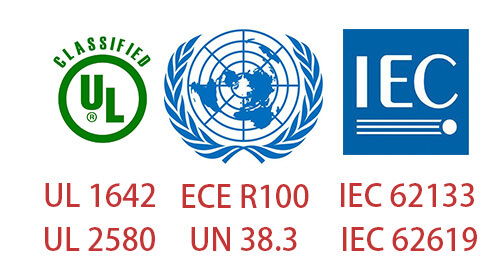
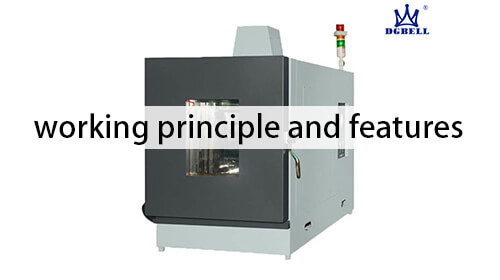
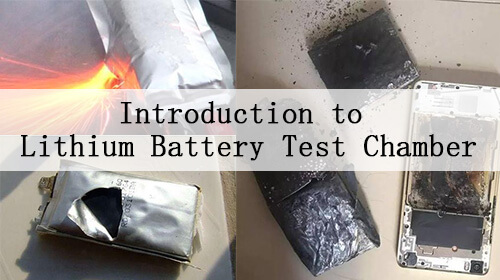
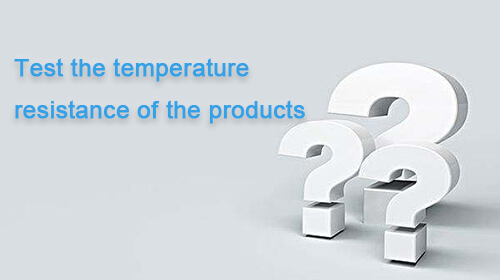
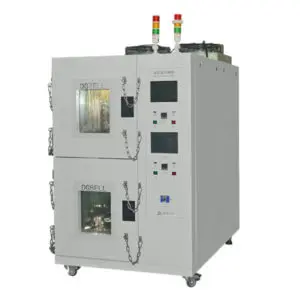

 Lithium-ion batteries are widely used in technological electronics, because of its improved value and compatibility on most electronics. The use of lithium batteries can be seen from smartphones that use small batteries to larger batteries as seen on automobiles. Lithium-ion batteries have gained the trust of many people globally due to its versatility and efficiency.
Lithium-ion batteries are widely used in technological electronics, because of its improved value and compatibility on most electronics. The use of lithium batteries can be seen from smartphones that use small batteries to larger batteries as seen on automobiles. Lithium-ion batteries have gained the trust of many people globally due to its versatility and efficiency.
 There are several factors, which will make a lithium-ion battery explode. In most cases, the problem is short-circuiting when the separator fails to limit the cathode and anode inside the battery from touching each other. Once the cathode and anode inside the lithium-ion battery touch each other, it will start to overheat both the battery and electronics components.
There are several factors, which will make a lithium-ion battery explode. In most cases, the problem is short-circuiting when the separator fails to limit the cathode and anode inside the battery from touching each other. Once the cathode and anode inside the lithium-ion battery touch each other, it will start to overheat both the battery and electronics components.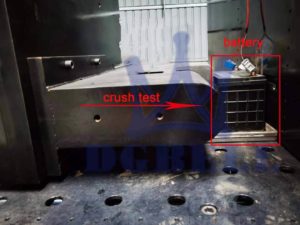 The safety testing for a lithium battery is the process where the battery is placed inside the environmental testing machine that mimics different external temperature conditions. A single specimen of the lithium battery placed inside the testing machine will likely turn out damaged after each testing phase because inside the environmental testing machine the temperature can either go from extreme cold to hot depending on the testing method initiated. The stages of the testing phase involve voltage testing, internal resistance testing, etc.
The safety testing for a lithium battery is the process where the battery is placed inside the environmental testing machine that mimics different external temperature conditions. A single specimen of the lithium battery placed inside the testing machine will likely turn out damaged after each testing phase because inside the environmental testing machine the temperature can either go from extreme cold to hot depending on the testing method initiated. The stages of the testing phase involve voltage testing, internal resistance testing, etc.


